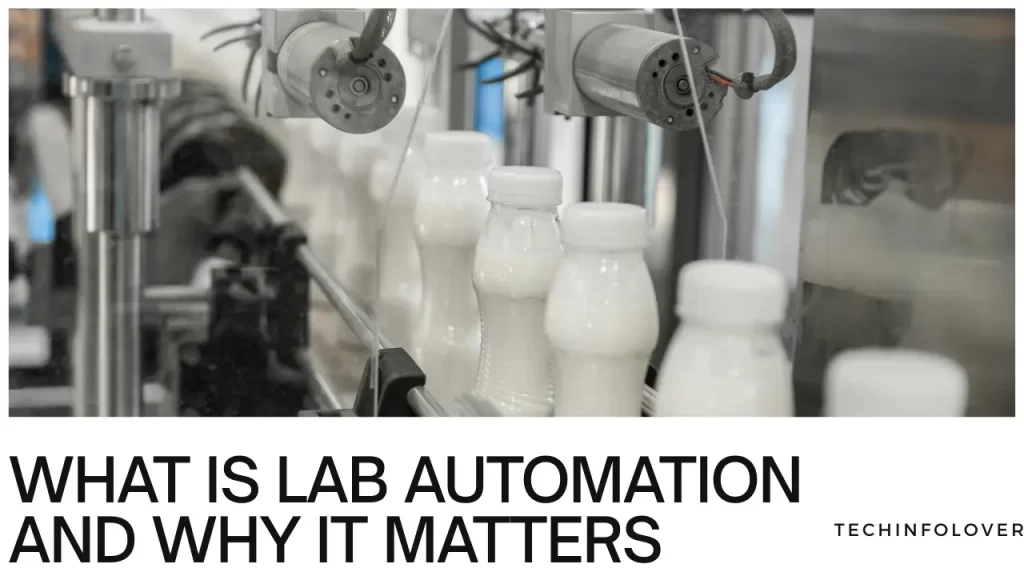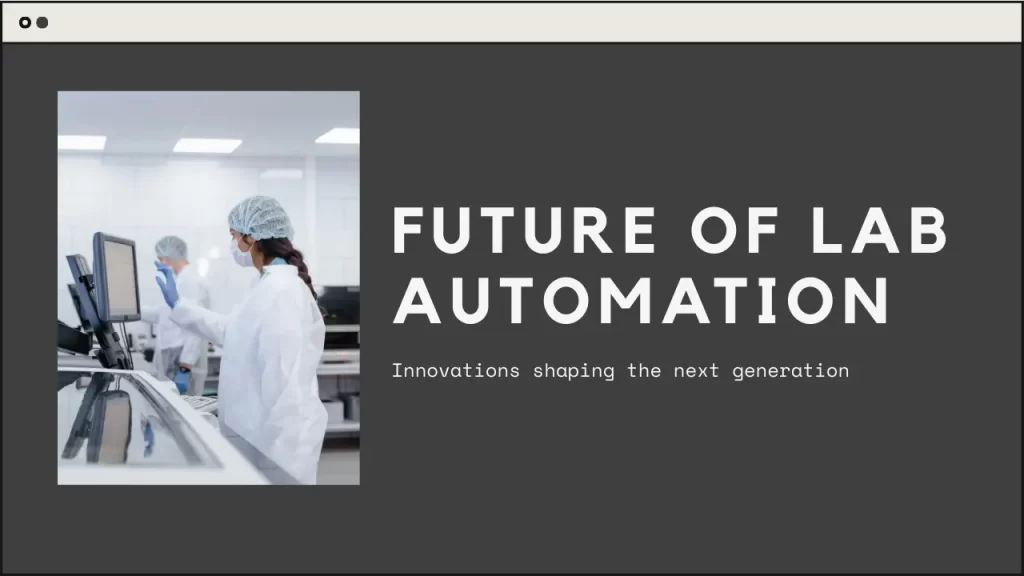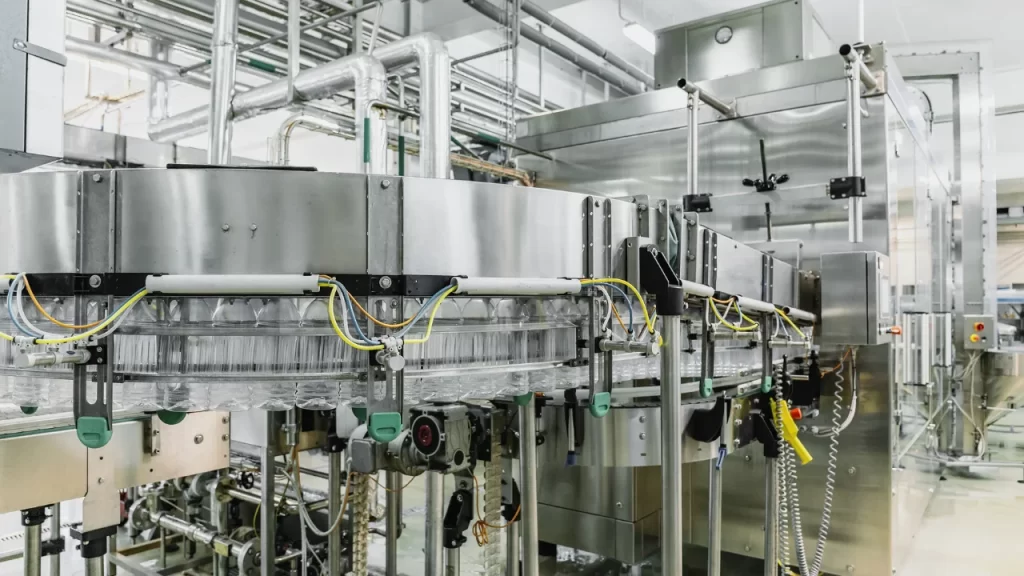Introduction
In the rapidly advancing world of scientific research and diagnostics, lab automation has become a game-changer. By integrating technology into laboratory workflows, researchers and technicians can now perform complex procedures with improved speed, accuracy, and reproducibility. From pharmaceutical testing to clinical diagnostics and genomic research, lab automation is streamlining operations and opening new doors in science and healthcare.
In this article, we’ll explore what lab automation is, how it works, its benefits, major use cases, tools and technologies, and how it’s shaping the future of laboratories worldwide.

What Is Lab Automation?
Lab automation refers to the use of technology and robotic systems to carry out laboratory tasks with minimal human intervention. These tasks can include liquid handling, sample preparation, data analysis, plate reading, chemical mixing, and more.
Instead of manually pipetting or analyzing samples, scientists can rely on automated systems to perform these actions with high precision, 24/7, and often at a scale that would be impossible for humans to maintain consistently.
Types of Lab Automation:
- Partial Automation – Automating select processes while maintaining some human oversight.
- Full Automation – End-to-end automation of complete workflows, including robotic arms, AI, and data systems.
Why Lab Automation Matters: Key Benefits
1. Increased Throughput
Automated systems can handle thousands of samples per day—something that would be time-consuming or impossible for manual teams.
2. Enhanced Accuracy and Precision
Automated equipment minimizes variability and human error in experiments, producing more reliable and reproducible results.
3. Faster Results
Automation accelerates workflow timelines, from drug screening to DNA sequencing, making research and diagnostics more efficient.
4. Improved Safety
Lab automation reduces human exposure to hazardous materials, biological samples, and infectious agents, enhancing safety protocols.
5. Cost Efficiency
While initial setup can be expensive, lab automation reduces the need for manual labor and repetitive tasks, leading to long-term savings.
Common Applications of Lab Automation
1. Clinical Diagnostics
Automated analyzers are used in hospitals and diagnostic labs to perform blood tests, urine analysis, and pathology screenings at high speed and accuracy.
2. Pharmaceutical R&D
Drug discovery, compound screening, and toxicology studies often involve thousands of samples. Automation systems enable high-throughput screening (HTS) to speed up development.
3. Genomics and Molecular Biology
PCR preparation, DNA/RNA extraction, next-generation sequencing (NGS), and other molecular assays benefit greatly from precise and scalable automation.
4. Microbiology and Cell Culture
Robotic systems can automate plate streaking, incubation, and colony picking, which improves consistency in microbial growth studies.
5. Food and Environmental Testing
Labs testing for contaminants or allergens in food, water, and air use automation to ensure compliance with safety standards efficiently and reliably.

Key Technologies Behind Lab Automation
1. Robotic Arms and Liquid Handlers
Used for tasks like pipetting, mixing, and transferring liquids, these systems increase speed and eliminate manual handling errors.
2. Automated Plate Readers and Analyzers
Devices that can read microplates (96-well, 384-well) automatically for colorimetric, fluorescence, or luminescence data collection.
3. Laboratory Information Management Systems (LIMS)
Software that integrates automation equipment with data storage, tracking, and reporting to ensure quality control and traceability.
4. Artificial Intelligence (AI) and Machine Learning
AI models assist in interpreting complex data sets, predicting outcomes, and adapting workflows dynamically in real time.
5. Integration with IoT and Cloud Platforms
Modern labs connect instruments to cloud-based systems for remote access, real-time monitoring, and predictive maintenance alerts.
Top Lab Automation Systems and Vendors (2025)
Here are some widely trusted lab automation providers and platforms:
| Vendor | Notable Products | Focus Area |
|---|---|---|
| Thermo Fisher | Orbitor RS, KingFisher Flex | Clinical, Genomics |
| Beckman Coulter | Biomek i-Series Workstations | Sample prep, Biotech |
| Tecan | Fluent, Freedom EVO | Liquid handling, Diagnostics |
| Hamilton | Microlab STAR, VANTAGE | Genomics, Drug Discovery |
| PerkinElmer | JANUS G3 Automated Workstation | Screening, Assay Development |
| Agilent | Bravo, AssayMAP | Genomics, Proteomics |
These companies offer scalable solutions from benchtop automation to fully integrated laboratory systems.
Challenges in Lab Automation
While automation offers massive benefits, it also comes with some challenges:
1. High Initial Investment
Lab automation equipment and systems can be expensive to implement, especially for smaller research labs or startups.
2. Integration with Existing Systems
Legacy instruments or manual workflows may not integrate seamlessly with modern automation platforms.
3. Complexity and Learning Curve
Staff need to be trained in using automation software, troubleshooting systems, and maintaining equipment.
4. Customization Needs
Not all lab tasks can be standardized; complex workflows often require customized automation configurations.
Lab Automation and Regulatory Compliance
For clinical and pharmaceutical labs, adhering to strict regulations is non-negotiable. Lab automation can support compliance with:
- FDA’s 21 CFR Part 11 (for electronic records and signatures)
- CLIA (Clinical Laboratory Improvement Amendments)
- GLP/GMP (Good Laboratory/Manufacturing Practices)
- ISO/IEC 17025 (Testing and calibration lab competence)
Automated systems can track data, time-stamp processes, maintain audit trails, and secure sensitive information—all critical for passing inspections and ensuring data integrity.
How to Implement Lab Automation in Your Laboratory
Step 1: Evaluate Needs
Identify which tasks are repetitive, error-prone, or time-consuming.
Step 2: Select the Right Equipment
Choose scalable and modular automation systems that align with your lab’s goals, whether it’s for molecular biology, clinical diagnostics, or food testing.
Step 3: Develop Standardized Workflows
Define protocols and test them to ensure reproducibility and efficiency in automation.
Step 4: Train Personnel
Train lab technicians, researchers, and managers to operate and maintain the automated systems properly.
Step 5: Monitor, Validate, and Optimize
Continuously monitor performance, validate data accuracy, and refine your workflows over time.

Future of Lab Automation: What’s Next?
The future of lab automation is driven by AI, cloud computing, and smart robotics. Emerging trends include:
- AI-Driven Protocol Optimization: Systems that learn and improve procedures over time.
- Remote Labs: Run, monitor, and troubleshoot lab automation from anywhere via the cloud.
- Lab-as-a-Service (LaaS): Outsourced automation platforms offering scalable, on-demand testing and analysis.
- Miniaturization & Portability: Compact systems that can perform high-throughput testing on-site or in the field.
These innovations are making labs more autonomous, data-driven, and accessible than ever before.
Conclusion
Lab automation is no longer a luxury—it’s a necessity in modern scientific and medical laboratories. With the ability to increase speed, accuracy, safety, and scalability, automation empowers researchers and clinicians to focus more on discovery and less on manual labor. Whether you’re in pharmaceuticals, diagnostics, agriculture, or academia, integrating lab automation can revolutionize your lab’s efficiency and precision.
As technology continues to evolve, labs that embrace automation will lead the way in innovation, productivity, and scientific impact.
Frequently Asked Questions (FAQs)
1. What is lab automation?
Lab automation refers to the use of technology, robotics, and software systems to automate laboratory tasks such as sample preparation, liquid handling, testing, and data analysis. It increases efficiency, reduces human error, and speeds up scientific workflows.
2. What are the main benefits of lab automation?
Key benefits include:
- Higher throughput and productivity
- Improved accuracy and reproducibility
- Reduced manual errors
- Safer working conditions
- Long-term cost savings
- Streamlined data management
3. Which industries use lab automation the most?
Lab automation is widely used in:
- Clinical diagnostics
- Pharmaceutical and biotech R&D
- Genomics and molecular biology
- Food and environmental testing
- Academic and government research labs
4. Is lab automation suitable for small laboratories?
Yes. While full-scale systems may be costly, many modular and benchtop automation tools are designed for smaller labs, making it possible to automate specific workflows without a large investment.
5. What are some examples of lab automation equipment?
Examples include:
- Robotic arms for pipetting and plate handling
- Automated liquid handlers
- Microplate readers
- DNA/RNA extraction systems
- Laboratory Information Management Systems (LIMS)
- Automated incubators and colony pickers
6. Can lab automation improve data quality?
Absolutely. Automation minimizes manual input and human variability, resulting in cleaner, more reliable, and reproducible data. Many systems also log actions and generate audit trails for full traceability.
7. What are the challenges of implementing lab automation?
Common challenges include:
- High initial setup costs
- Integration with existing workflows or equipment
- Need for specialized training
- Software compatibility and maintenance
- Customization for complex or niche procedures
8. How does lab automation support regulatory compliance?
Automation systems can help meet regulatory standards such as:
- FDA 21 CFR Part 11 (for electronic records)
- GLP/GMP guidelines
- CLIA compliance
- ISO 17025 accreditation
By ensuring audit trails, secure data management, and reproducible workflows, these systems support consistent compliance.
9. Is AI used in lab automation systems?
Yes. AI and machine learning are increasingly being integrated into lab automation to enhance data analysis, optimize experimental workflows, and enable adaptive decision-making in real time.
10. What is the future of lab automation?
The future lies in:
- Cloud-connected and remote-operated labs
- AI-powered decision-making systems
- Lab-as-a-Service (LaaS) models
- Smaller, smarter, and more flexible automation tools
- Integration with digital twins and real-time analytics
These innovations will transform how labs operate, making research faster, smarter, and more scalable.



